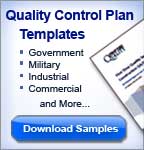 Ask any superintendent or subcontractor and they’ll tell you they install products the right way. After all, they’ve been in construction a long time, right?
Ask any superintendent or subcontractor and they’ll tell you they install products the right way. After all, they’ve been in construction a long time, right?
This may surprise many of you, but almost every time I compare the manufacturer’s installation instructions with how a product was installed or built on the jobsite I find major differences.
If you don’t believe me, look closely at any critical building product installation. Take windows for example, bring the manufacturer’s instructions to your jobsite and compare the jobsite installation for flashings, sealants, shimming, and fastening, etc. with the manufacturer’s specifications.
Chances are, you’ll see that there’s a difference. It’s important for you to find these errors before they turn into costly defects or legal actions.
Here are five steps to making sure you are building it right.
1. Get the Specifications
First, you’ll need to know how to build it right. With most specifications on the internet, you can easily find product installation specifications on the manufacturer’s website. Also, review building code and industry standards.
2. Jobsite Verification
Second, observe an installation and compare what you see to the specifications. When you find a discrepancy, take pictures of details so you can refer to them later.
3. Define the Right Way
Third, if there is a discrepancy, ask the installer why they use the method they do. Not all differences mean that the installation is wrong. Your installer’s method might be better. Show them the specification and ask for their opinion.
Call the product manufacturer if you need additional insights. In the end, you will decide what the right way is for your company. If necessary, obtain a letter from your engineer or product manufacturer approving your alternative method.
 4. Train, Train, Train
4. Train, Train, Train
When you find a product that’s not being installed correctly, create a hotspot training sheet for each detail showing the right way and the old (wrong) way. Train the installation crews, their supervisor, your field supervision staff, and quality personnel on the needed changes.
Reinforce the training by posting the training sheet on the jobsite and reviewing it with the crew before they begin work.
 5. Follow-up
5. Follow-up
Use your normal inspection process and field reviews for follow-up. Existing inspection forms can be used with this one simple enhancement: add a checkpoint for each revised installation detail. Even better is including reduced-sized training pictures on the inspection form.
If inspections find old ways persisting, loop back and retrain people that need special attention.
Getting Started
With the so many building products being installed, you’ll want to take a systematic approach to evaluating each one. My advice is to organize your effort by specialty trade. Start with the exterior building envelope, then proceed to concrete, and the mechanical trades. Allow yourself the flexibility to start the next trade as you get into step 3 or 4 above.
On some trades you can leverage your effort by asking some of your top people or subcontractors to take the lead. The good news is that in a few months you will make huge gains toward first time quality and minimize your risk for costly defects.
About the Author - Ed Caldeira is founder of First Time Quality, LLC, specializing in submittal-ready construction QA/QC plan templates and custom quality plans as well as construction quality inspection and punchlist software.







